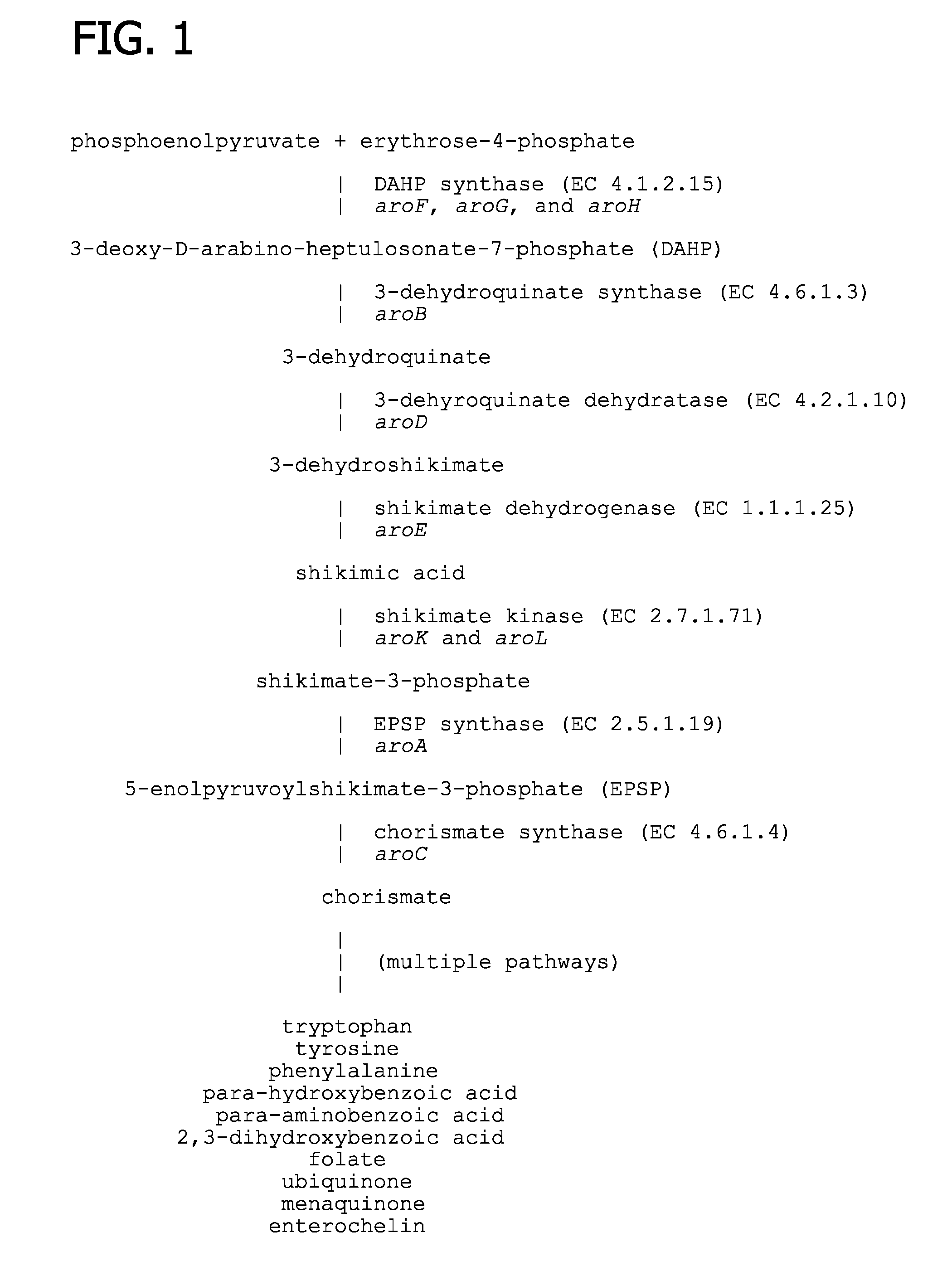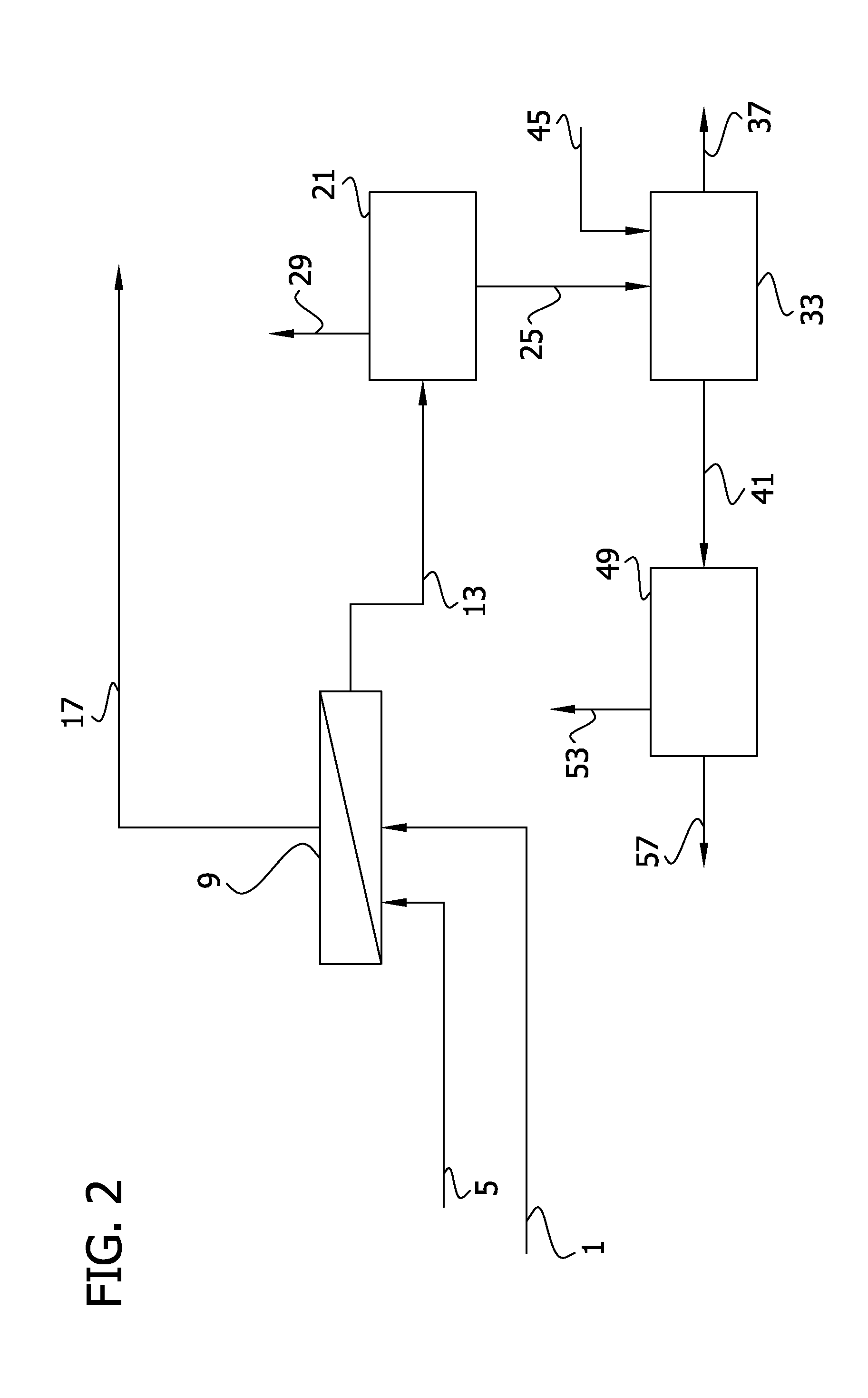Processes for producing and recovering shikimic acid
a technology of cyclitolcarboxylic acid and shikimic acid, which is applied in the separation/purification of carboxylic compounds, fermentation, organic chemistry, etc., can solve the problems of limited drug production, limited natural source, and scarce and expensive shikimic acid
- Summary
- Abstract
- Description
- Claims
- Application Information
AI Technical Summary
Benefits of technology
Problems solved by technology
Method used
Image
Examples
example 1
Application, Harvest and Extraction of Shikimic Acid from Alfalfa
[0164]Alfalfa was established in a greenhouse in 4 inch pots and treated with glyphosate at an early vegetative stage. Approximately 8 plants per pot were treated at the V4 growth stage. Plants were treated with ROUNDUP WEATHERMAX in a track sprayer, at 0, 100, 200, 400 and 800 g a.e. / ha and returned to the greenhouse. All treatments were replicated 5 times. Leaves were harvested at five time points: immediately after spray (t0), and at 1, 2, 3 and 4 days after treatment. After harvest, leaves were frozen on dry ice, weighed, and then stored at −80 C until extraction and analysis.
[0165]For t0 harvest, leaves were harvested immediately after treatment. For the 1, 2, 3 and 4 day harvest, plants were washed thoroughly with water from a spray hose and then allowed to dry before harvest. This procedure allowed for the measurement of the concentration of shikimic acid as well as an estimate of the concentration of glyphosate...
example 2
Application, Harvest and Extraction of Shikimic Acid from Soybean
[0171]Soybean plants were established in a greenhouse in 4 inch pots and treated with glyphosate at an early vegetative stage. Approximately 1 plant per pot was treated at the V2 growth stage. Plants were treated with ROUNDUP WEATHERMAX in a track sprayer, at 0, 100, 200, 400 and 800 g a.e. / ha and returned to the greenhouse. All treatments were replicated 5 times. Leaves were harvested at five time points: immediately after spray (t0), and at 1, 2, 3 and 4 days after treatment. After harvest, leaves were frozen on dry ice, weighed, and then stored at −80 C until extraction and analysis.
[0172]For t0 harvest, leaves were harvested immediately after treatment. For the 1, 2, 3 and 4 day harvest, plants were washed thoroughly with water from a spray hose and then allowed to dry before harvest. This procedure allowed for the measurement of the concentration of shikimic acid as well as an estimate of the concentration of glyp...
example 3
Shikimic Acid Yield from Various Plant Species
[0177]Plant species including soybean, alfalfa, wheat, annual ryegrass, perennial ryegrass, sunflower, and sugar beet were evaluated to determine the yield of shikimic acid resulting from treatment with ROUNDUP Herbicide.
[0178]Plants were treated with ROUNDUP WEATHERMAX in a track sprayer at 800 g a.e. / ha and returned to the greenhouse. All treatments were replicated 5 times. Leaves were harvested at three days after treatment. After harvest, leaves were frozen on dry ice, weighed, and then stored at −80° C. until extraction and analysis.
Shikimic Acid Extraction:
[0179]Leaf tissue was ground frozen on dry ice to a frozen powder. The frozen powder was stored in sample tubes for subsequent subsampling and extraction. Approximately 100 mg of frozen powder was weighed into tared 1.8 mL Sarstedt tubes and extracted into 900 μl of 0.25 N HCl. A stainless steel chip was added to each sample and the tubes were extracted by shaking on a Harbill pa...
PUM
| Property | Measurement | Unit |
|---|---|---|
| weight | aaaaa | aaaaa |
| temperatures | aaaaa | aaaaa |
| temperature | aaaaa | aaaaa |
Abstract
Description
Claims
Application Information
 Login to View More
Login to View More - R&D
- Intellectual Property
- Life Sciences
- Materials
- Tech Scout
- Unparalleled Data Quality
- Higher Quality Content
- 60% Fewer Hallucinations
Browse by: Latest US Patents, China's latest patents, Technical Efficacy Thesaurus, Application Domain, Technology Topic, Popular Technical Reports.
© 2025 PatSnap. All rights reserved.Legal|Privacy policy|Modern Slavery Act Transparency Statement|Sitemap|About US| Contact US: help@patsnap.com



